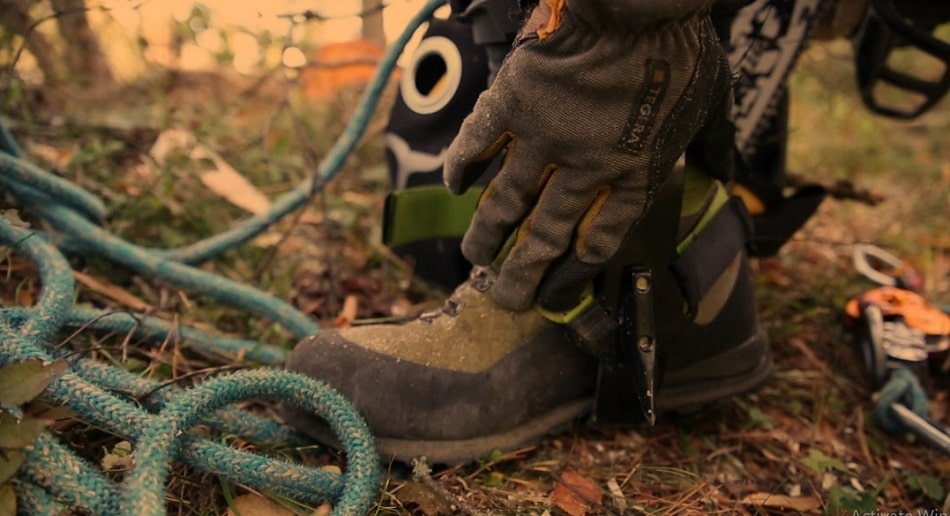Climbing up trees is a lot safer nowadays. There is different equipment which has made climbing easier and safer. Climbing with the aid of spike is one of these.
The people who climb trees for recreation mostly use the rope technique. This spike technique is mostly used by professional tree climbers.
However, some people find it a bit complicated to put on climbing spikes. But here I am going to guide you and let you know how to put on tree climbing spikes.
So, stay with me for that.
Where to buy tree climbing spikes:
There is a wide collection of different climbing spikes in shops. You can easily get from there. However, make sure the spikes you buy are less heavy. This will surely make climbing safe and easier.
You can also find the tree climbing spikes on different online platforms. Amazon and eBay have a great collection of such spikes. Although they have some really expensive kits, they also have some cheaper ones.
I would recommend getting your kit online. That’s because it allows exploring a wide collection. At the same time, you can compare to get the best one.
Best climbing spikes:
It may seem difficult to choose a suitable climbing spike when you are choosing one for the first time. For your convenience, I have mentioned some of the best kits here. And these kits received a really good rating from the users.
As a beginner, you may try the Entry-Level Spur Kit or Entry-Level Combo Spur and the Rope Kit. You can get both of these on Amazon.
However, it is important to get a perfect size. They have different sizes of these kits. Make sure of the perfect size before buying.
Parts of climbing kit:
The first part of the climbing kit is the stirrup, shank, and foot strap. Parts that touch the tree are called the gaff. Gaff is replaceable and also known as spikes or spur.
The second part of the kit is the calf strap and the comfort pad. The kit will also have some screws or hardware for assembling the different parts.
How to put on climbing spikes: Steps you need to know for putting on tree climbing spikes
Now that you know the parts of the climbing kit, I will directly move on to setting these parts. First of all, you need to assemble the parts of climbing spikes before putting them on.
At first, the pad needs to slide on the shank, facing the forward direction. Next, the sleeve will slide into this.
Assemble these parts with screws. Next, pass the calf strap through the pad and sleeve.
After setting up all the parts, we can move on to its putting up steps.
First of all, step your one foot into the stirrup and assemble your lower foot strap. Make sure it’s at a suitable height, ideally two fingers below the knee.
Next, assemble the top calf strap tightly.
After that, step your second foot into the stirrup and assemble it with your leg similarly. Remember the spikes or spurs will be inside of your feet. These will not touch the ground unless you curve the legs.
Climbing tips and warnings:
Now, let me share some of the climbing tips with you. First of all, check the climbing spot properly before going for it. The tree branches or the bees’ nest may harm you.
Make sure the spikes have punched the tree adequately before going for another step. Keep your legs straight and maintain the angel. For protecting your eyes, glasses are recommended to wear
Also, select good weather for climbing up. Do not climb during thunderstorms or rain. Rain may make the tree slippery and make it difficult to climb.
Does spiking hurt the tree?
Yes, it hurts the tree. The repeated punches on the tree with spikes damage its tissue. That’s why spiking is not recommended unless the purpose is to remove the tree.
Also, spiking increases the chances of trees getting infected. That’s because the spikes may spread the disease of one tree to another.
Final Verdict:
I hope now you know how to put on tree climbing spikes. And surely this knowledge will help you if you are planning to climb trees with spikes.
However, if you still have confusion, you can check out some YouTube videos for getting more insight.
I wish you a safe and pleasant climb.
Find more about climbing spikes in our guides.

